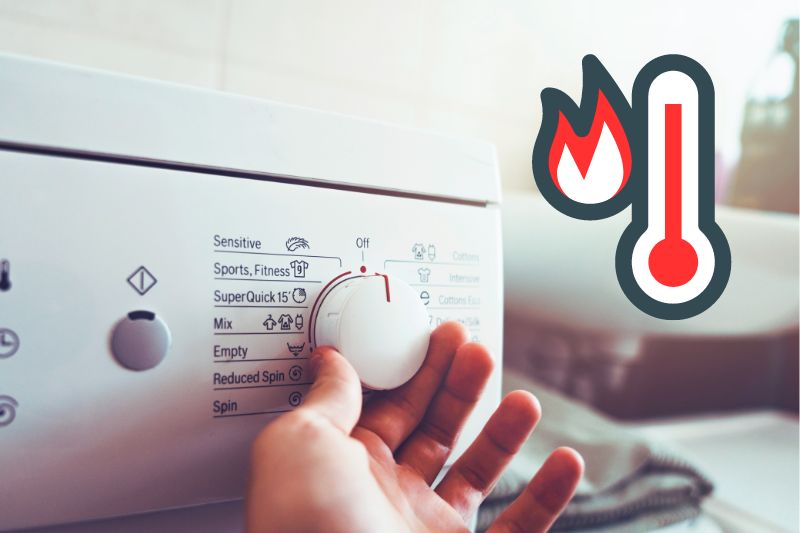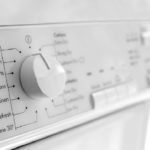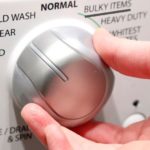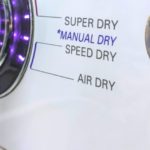One of the most important settings on a washing machine is the temperature control. Most washing machines offer a wide variety of temperature settings that each have their place in ensuring your clothing is cleaned to the highest standard.
To avoid unwanted damage to clothes and cut energy costs, many people stick to cooler washes of 30°C or 40°C.
However, using a hot wash setting also comes with a variety of benefits, especially when washing heavily soiled items. But what is the hottest setting on a washing machine?
You will learn the answer to this question and so much more in this article! Read on to learn everything you need to know about your washer’s maximum heat setting, including how that temperature is reached and when it can be used.
What Is the Maximum Heat Setting on a Washing Machine?
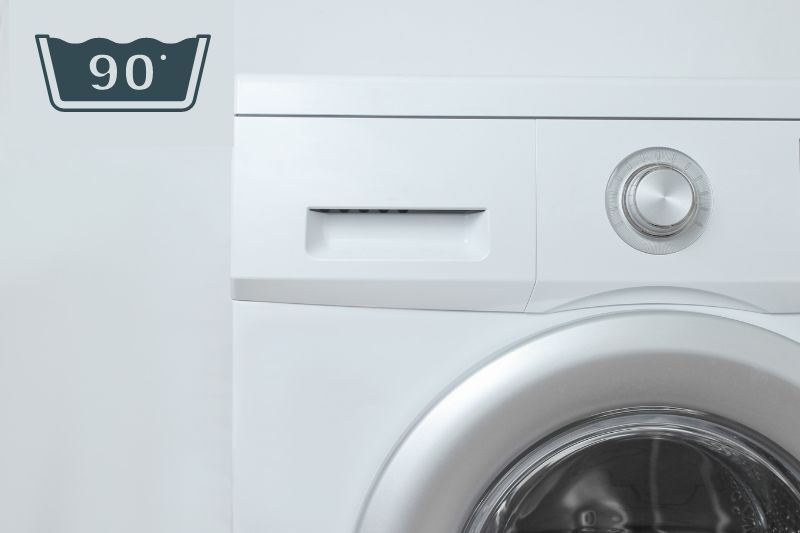
The hottest temperature setting on a washing machine will vary slightly depending on the make and model of your appliance.
The maximum temperature that most washing machines can reach is 90°C or 95°C. However, many brands will have a lower maximum temperature of 60°C.
In the UK, 60°C is still classed as a hot wash, and it is extremely rare that a temperature higher than this will be needed to clean your clothing.
Washing machines offer a wide range of temperature options, so you can choose the temperature that best suits your load of laundry.
You’re more likely to need temperatures below 60°C than higher. So, don’t worry if your machine doesn’t reach 90°C.
If you want to find out the maximum temperature of your washing machine, refer to the appliance instruction manual. Alternatively, this information is likely provided on the manufacturer’s website.
Which Washing Cycles Is Hottest?
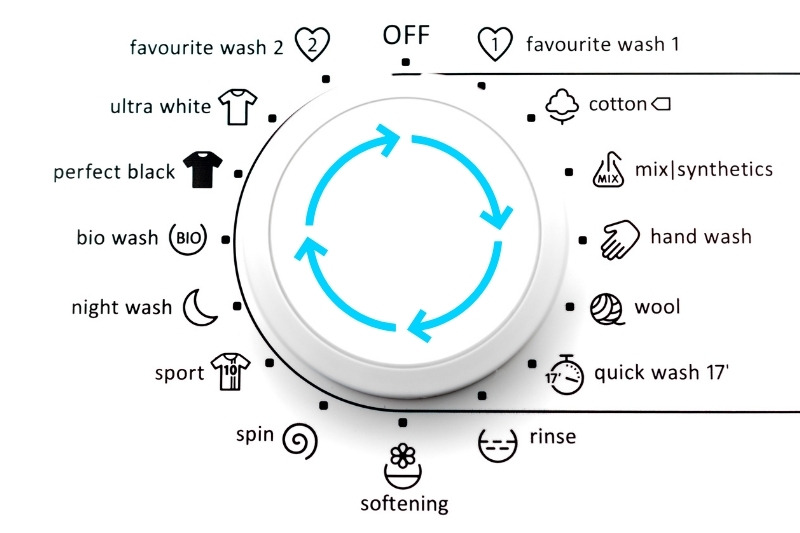
Most washing machines have several standard washing cycles or programmes to choose from. Often they have a preset temperature, but you can manually adjust this if you’d like a hotter temperature.
The cycles that can be adjusted to the highest temperatures are usually the longest cycles, as it takes a while to heat the water to really high temperatures.
The exact temperatures of each cycle will vary from machine to machine, so check your user manual.
Here’s a rough guide to the hottest cycles on a washing machine:
- Cottons: Maximum temperature 90°C
- Babycare: Maximum temperature 90°C
- Anti-Allergy: Maximum temperature 90°C
- Drum Clean: Maximum temperature 90°C
- Synthetics: Maximum temperature 60°C
- Mixed Load: Maximum temperature 60°C
- Easy Care: Maximum temperature 60°C
Please note, the name and exact temperature of cycles on your washing machine are likely to be somewhat different to the list above.
Do Washing Machines Heat Their Own Water?
In the past, it was most common for washing machines to draw their water in through two different supply pipes: one for hot water and one for cold. This generally meant that these appliances didn’t need to heat their own water.
These washing machines are still common in the US and can also be found in the UK, but most modern machines in the UK and Europe now fully rely on an internal heating element instead. This means that the washing machine is supplied with cold water that is then brought up to your selected temperature once it enters the machine.
Because only the water used in the machine is heated up, this is generally more energy efficient. Additionally, your washer can continue to run when you don’t have access to hot water.
However, it also means that your washing machine will only be able to reach the hottest temperatures when on a longer cycle. Short cycles don’t offer enough time to heat the water to 60°C or more.
If you’re unsure which type of washing machine you own, the easiest way to tell the difference is to see whether it is being supplied by one or two water pipes.
How Do I Know If My Washing Machine Is Heating Water?
If your clothing starts coming out of the washing machine feeling cold or seeming unclean, you may question whether your appliance is heating water like it is supposed to.
Of course, this isn’t a concern if your machine is supplied with hot water from an external source, but it is slightly concerning if it heats its own water.
Thankfully, some newer washing machine models can detect any heating malfunctions and will let you know there is an issue by displaying an error message or stopping the current wash cycle.
Unfortunately, older models do not have this function, so you will have to check the issue yourself.
This is a tricky diagnosis to make, but some potential ways to check for a heating issue include:
- Place your hand on the door of your washer roughly 30 minutes into your wash cycle to see if it feels hot. Bear in mind that the thickness of the door may prevent you from feeling any heat, even if your washer is working correctly.
- Check your freshly washed clothes to see if they are clean. This isn’t always an indicator of a lack of hot water, but it does suggest there is an issue with your machine that needs to be fixed—perhaps with the heating element, or perhaps something else.
- Test the water temperature using a thermometer. For top loaders, open the lid of your washer mid-cycle to measure the temperature. If you own a front-loading washing machine, you will have to reroute the draining pipe into a large bucket in order to do this.
If you’ve done these tests and still think there is a problem with your washing machine’s temperature control, we suggest you call a professional. They will be able to check your appliance themselves and determine the underlying issue. Some of the issues that could be causing the problem are:
- A faulty heating element
- Thick layers of limescale build-up
- A damaged thermometer
- A lack of power due to improper wiring
In most cases, these issues can be fixed by replacing the faulty washing machine component. However, some extreme cases may require you to purchase a new appliance.
When Should You Wash Clothes in Hot Water?
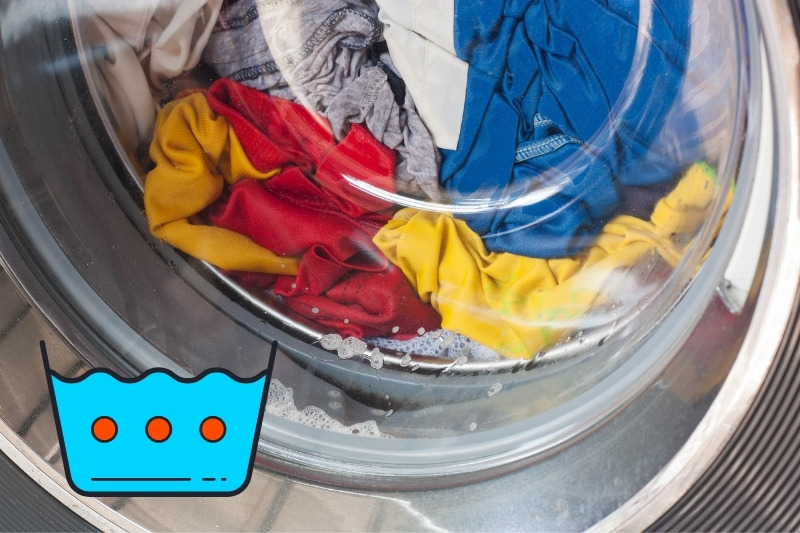
Although all washing machines can wash clothes at hot temperatures, this does not mean you should do this regularly. Many items will become shrunken or misshapen if they are washed at a high temperature, and the increased heat may cause some stains to set permanently on the fabric.
In general, lighter-coloured clothing items can be washed at a higher temperature as there is less risk of fading, while dark or bright garments need to be washed at cooler temperatures.
However, this will vary depending on the fabric used. It’s always best to wash your garments according to the care label instructions, but some general guidelines on washing temperatures are as follows:
- 30 degrees Celsius: This temperature is ideal for delicate fabrics such as wool and silk as they are most likely to shrink in the wash. Coloured or patterned items would also be best washed at a cooler temperature.
- 40 degrees Celsius: Pre-shrunk cotton, linen, viscose and acrylics are best washed at 40 degrees Celsius, as higher temperatures are likely to damage the fabric. If your cotton garments have not been pre-shrunk, it is better to stick with a cold wash instead.
- 60 degrees Celsius: A hot wash can be used to clean underwear, sports clothing, and any fabrics that have come into contact with harmful bacteria (e.g., a hospital uniform or bedding). It will shrink many fabrics but is highly effective at removing germs and odours.
- 90 degrees Celsius: A wash temperature as high as 90 degrees is rarely used as it has the potential to shrink all fabric types. However, it can help to brighten white garments, combat nasty stains, clean your washer, and destroy bacteria on heavily soiled items.

Hannah has a passion for cleaning. She worked her way around Australia by cleaning hostels in exchange for free accommodation and used her cleaning skills to bag a job as a chalet host for a luxury ski company in France.
